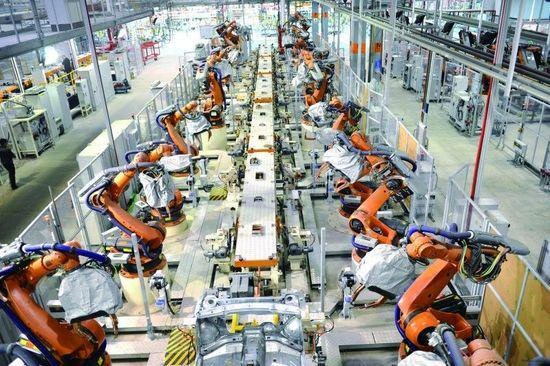
NANCHANG | Xinhua | Despite external pressure and internal difficulties, China’s economy has achieved a recovery and made solid progress in high-quality development in 2023, noted the annual Central Economic Work Conference held last week.
Among various factors propelling growth, consumer spending is playing an increasingly important role, accounting for 83.2 percent of economic growth in the first three quarters, according to data from the National Bureau of Statistics.
Latest figures also show that China’s total retail sales of consumer products hit 42.8 trillion yuan (about 6.03 trillion U.S. dollars), in the first 11 months, up 7.2 percent year-on-year.
China is the world’s second-largest consumer market, the largest online retail market, and the second-largest import market globally. As the benefit of consumption continues to play out in bolstering the economy, the consumption structure is continually optimizing and new forms of consumption are thriving.
ROBUST SPENDING STREAM
Broadcasting for 24 hours a day, providing fast and accurate responses, introducing best deals and discounts… During this year’s “Double 11,” China’s annual online shopping fiesta that lasted from late October to mid-November, virtual anchors seized the spotlight in live-streaming across major e-commerce platforms.
During the period, virtual anchors on JD.com hosted live-streaming sessions featuring more than 4,000 brands, according to the e-commerce giant. A nonstop 28-hour session recorded a transaction rate of 46 percent.
The innovative live-streaming mode has further spurred consumption during the first post-COVID “Double 11.” As of midnight of Nov. 11, 402 brands on Alibaba’s Tmall platform reported their individual sales exceeded 100 million yuan, while JD.com announced that more than 60 brands saw their respective sales topping 1 billion yuan.
Data from China’s State Post Bureau show that in the first 11 days of November, express courier delivery enterprises across the country collected about 5.26 billion packages, a record high, surging 23.22 percent from a year earlier.
Robust consumption is also reflected in the volume of deals on trade fairs. The sixth China International Import Expo (CIIE), held in November, saw a total of 78.41 billion U.S. dollars worth of tentative deals reached for one-year purchases of goods and services, setting a record high.
CULTURE CONSUMPTION CRAZE
For Zhang Qufei from Beijing, his shopping carts this year have been filled not only with desirable products but also tickets for various performance events. The 27-year-old music enthusiast told Xinhua that he has attended 34 music shows this year, including five concerts, three music festivals, and 26 live house performances. He spent a total of 12,000 yuan solely on the tickets.
Zhang represents an expanding share of Chinese consumers who spend regularly on cultural events. According to data from the China Association of Performing Arts, there were 342,400 commercial performances in the first three quarters of this year, generating over 31.54 billion yuan in box office income, an increase of 453.74 percent year on year.
Since early March this year, Zibo, a low-profile industrial city in east China’s Shandong Province, shot to national fame with its iconic barbecue characterized by a unique taste, DIY style, and affordability. Nationwide foodies poured into the city and made it one of China’s most popular tourist attractions in 2023.
Data show that in the first half of this year, Zibo saw a total of more than 30 million tourists and a staggering revenue of 28.72 billion yuan, representing year-on-year increases of 45.69 percent and 48.6 percent respectively.
In 2023, an increasing number of Chinese cities have joined the trend of creating distinctive “city name cards.” They are capitalizing on local cultures, including cuisine, landmark buildings, and folk customs, to catalyze the revival of the local tourism market and foster economic development.
Over the summer, villagers in Rongjiang County, southwest China’s Guizhou Province organized a thrilling grassroots football tournament and threw in folk song and dance performances throughout the half-time breaks, showcasing the vibrant local ethnic Dong culture.
The unique and creative event attracted tens of thousands of spectators from across the country. During the tournament, local agricultural product sales reached 401 million yuan and nighttime consumption saw a 362.5 percent year-on-year increase, reaching 309 million yuan.
SOARING HOLIDAY CONSUMPTION
About two weeks before the 2024 New Year holiday, all 23 hotels and homestays in the Yabuli Ski Resort in Harbin, capital of northeast China’s Heilongjiang Province, were fully booked for the holiday period, reflecting the increasing enthusiasm for holiday consumption in China.
According to Muniao, an online booking platform for short-term property rental, the platform has entered the peak season for homestay booking for the 2024 New Year holiday. As of Dec. 11, the number of orders for the three-day holiday has increased by 12 times year on year.
According to the Ministry of Culture and Tourism, Chinese people made 274 million domestic trips during the May Day holiday and 826 million domestic trips during the Mid-Autumn Festival and National Day holiday, up about 19 percent and 4.1 percent, respectively, compared to the pre-COVID levels in 2019.
“The significant rebound in holiday travel consumption speaks volumes about the robust growth resilience of the Chinese economy and its promising development prospects,” said Zhao Xijun, a finance professor at Renmin University of China. ■
 The Independent Uganda: You get the Truth we Pay the Price
The Independent Uganda: You get the Truth we Pay the Price


